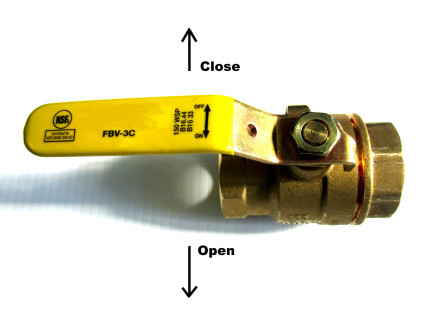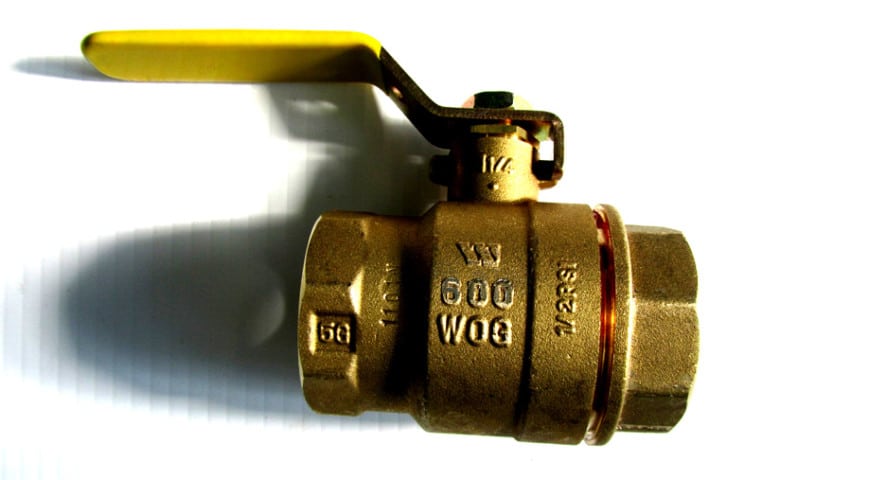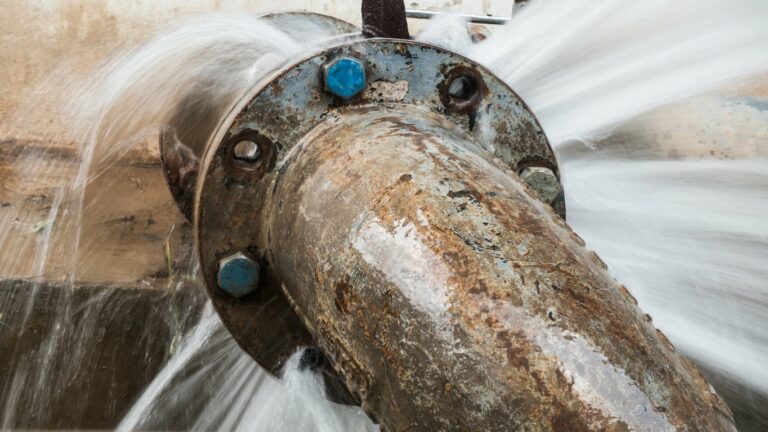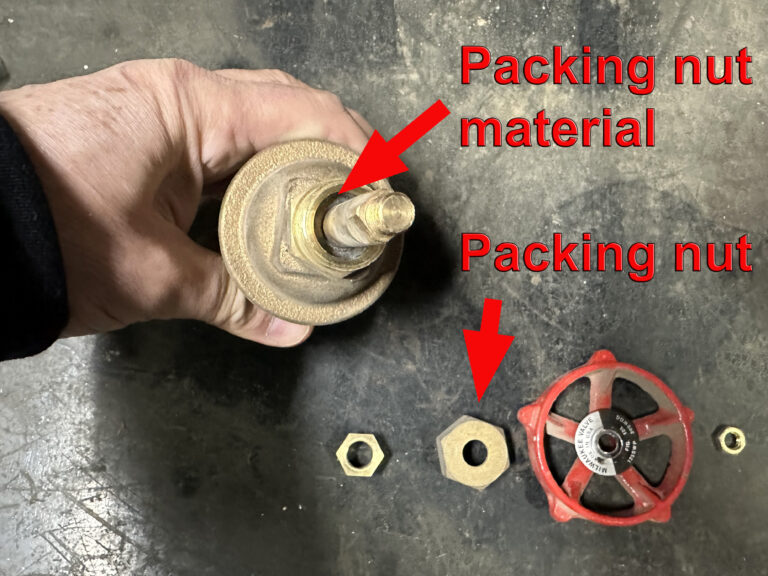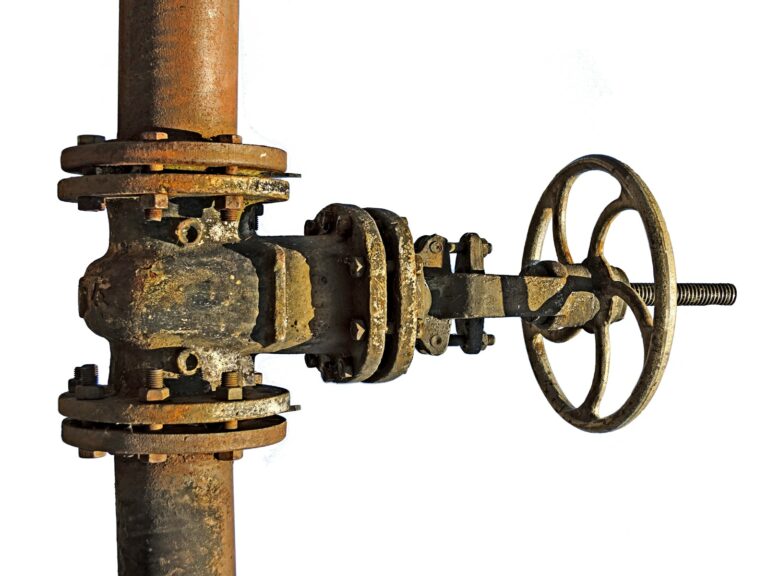When you need to operate a brass ball valve on a water main service line, observing a few simple rules can be very helpful. Opening and closing a brass ball valve correctly can prevent damage and unnecessary repair work. In addition, operating it correctly will add years of useful service life to this very dependable device. On the other hand, misuse routinely results in valve failure and an unexpected loss of water service for a building.
Opening or closing a brass ball valve
To open or close a brass ball valve on a water line requires only a quarter of one turn. Many times a brass ball valve is damaged by a person attempting to over-turn the valve. If it turns more than 1/4 of a turn you have broken the valve!
Typically there will be an arrow on the handle to indicate which direction to turn the handle for the desired effect. When opening or closing a brass ball valve do so slowly. Abruptly opening a valve will cause water to rush through the plumbing system and cause damage. Leaks can occur, or the plumbing can blow apart. This is called water hammer.
Open an upper-floor faucet to bleed out air
Always have a faucet on the top floor of the building open to monitor water flow and let air escape when water is being introduced back into the plumbing system.
A Ball Valve is considered a fast-opening valve
Note that a brass ball valve is considered a “fast opening” valve. That means that your plumbing system will get reactivated with water in an instant. So always avoid turning on the valve fully, and too quickly.
Always turn the handle just enough to let the water gently refill the pipes. This will prevent water hammer and damage to your plumbing system from happening.
Helpful tip #1
If a ball valve is not ‘exercised‘ once in a while (opened and closed) it may become frozen in place and hard to move. Therefore it should be part of every property owner’s routine maintenance to open and close water valves annually. This should be done with a faucet open, allowing for any debris of sediment that breaks loose from inside the valve to escape.
Never try to force the handle to move, or apply a jolting force. If some extra leverage is needed place an ‘extension’ on the valve handle. Then apply steady and even pressure. An extension on the handle should open the valve safely and easily due to increased leverage. Many items can be used as an extension, such as a short piece of 1 1/2″ or 2″ pipe, placed directly over and around the handle.
Helpful tip #2
Most times when a ball valve for a water service line is damaged it is caused by over-turning the handle. Never turn the valve handle more than 1/4 of a turn. If exceptional resistance is met you are probably turning the handle in the wrong direction! Always look for the directional arrow on the handle of a brass ball valve. All brass valves do not open and close in the same direction, this also applies to gate valves.
About Brass Ball Valves
There are various types of ball valves, and each of them is designed for different applications and uses. Full port brass ball valves should used at all times. This means that the opening inside the body is the full size of the valve inlet and outlet so there is no reduction in the flow of water. Full port and rated brass ball valves are the only types accepted by the NYC plumbing code as main control valves.
A brass ball valve is much more dependable than a gate-type valve and also is relatively fool-proof. In addition, it is typically rated higher at a higher p.s.i. (pounds per square inch). Therefore able to withstand much greater water pressure. Because there is no ‘stem’ inside a ball valve, raising or lowering a gate (such as in a gate-type valve), it is very unlikely to ever fail or break.
Most NYC water main contractors prefer to use a ball valve as the main control valve on all domestic water service lines up to 2″ in diameter. On larger domestic service lines, and fire mains, different types of valves are required and are also more cost-effective.



